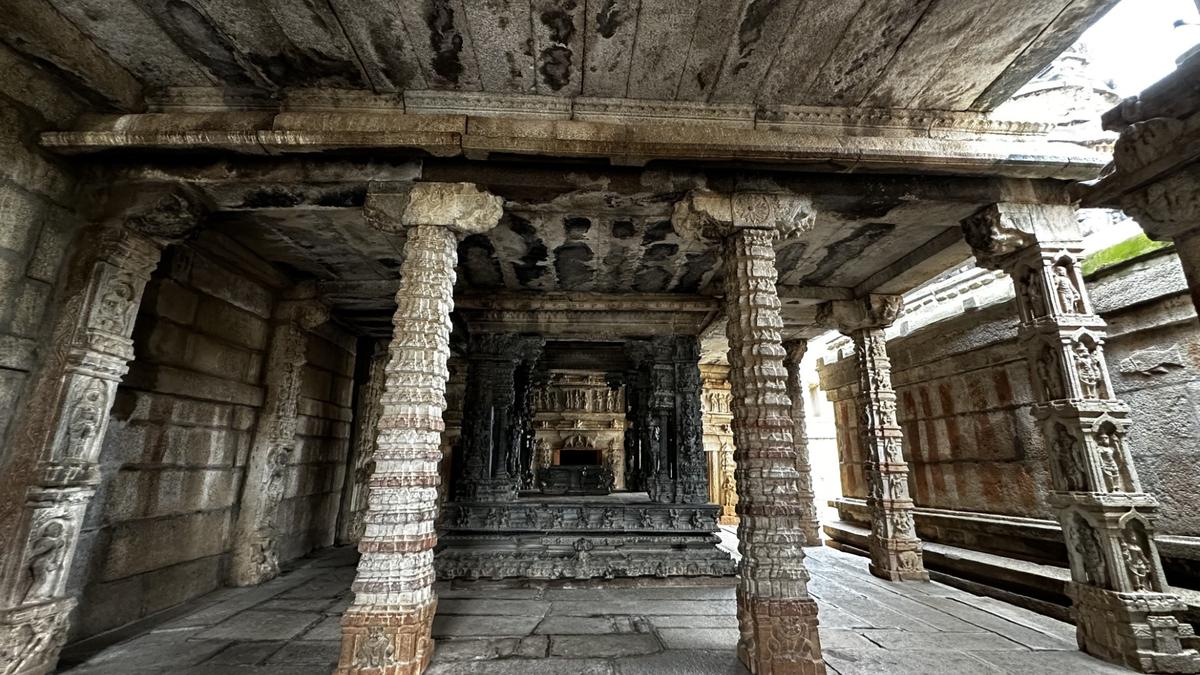Somapalem, a small village about 45 km from Madanapalle in Andhra Pradesh, is home to a spectacular Vishnu temple belonging to the Vijayanagara period, dedicated to Chennakesava. Though the temple may have existed earlier, it was in the reign of the Vijayangara rulers of the 16th century that much of the temple, as seen today, was constructed. It has several features similar to other Vijayanagara era temples such as the famous Virabhadra Swami temple in Lepakshi, and the Chintala Venkataramana Swami and Ramalingeshwara temples in Tadipatri.
It appears that the Somapalem temple was constructed by chieftains of the region, although there are no inscriptions to authenticate this. It is a protected monument under the care of the Archaeological Survey of India. The majestic deepa-stambha | Photo Credit:Courtesy: Chithra Madhavan At the entrance to the temple’s enclosure ( prakaram ), visitors can see a tall (more than 50 ft high) and majestic monolithic deepa-stambha (lamp post) installed on a huge stone platform.
Deepa-stambhas are commonly seen in many temples of South India, as lamps were lit atop them to illuminate the surroundings in pre-electricity days. The platform is covered with sculptures including a man dancing and holding a musical instrument like a veena in his left hand; a comic character; and a lady holding a fly-whisk. Creepers have been intricately carved on all four sides of the vertical stone shaft.
A mutilated gopuram stands at the entrance, to the right of .


















